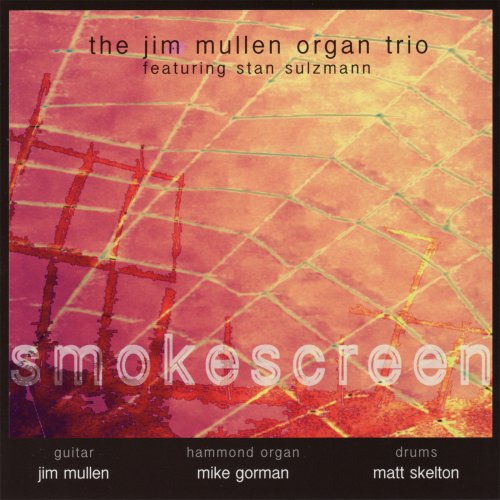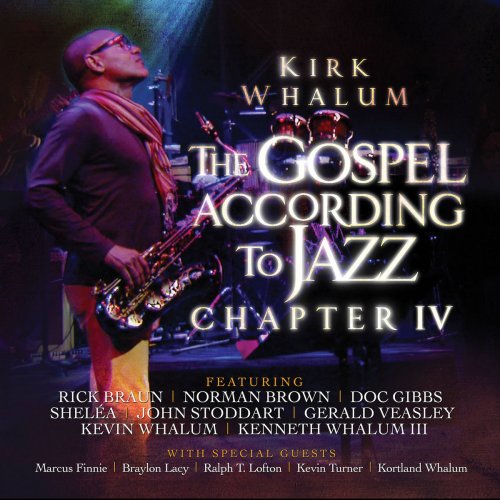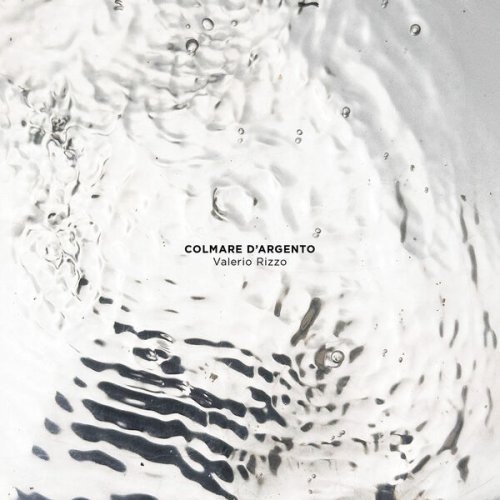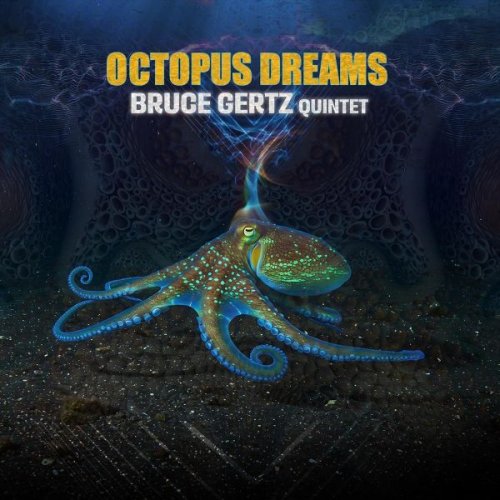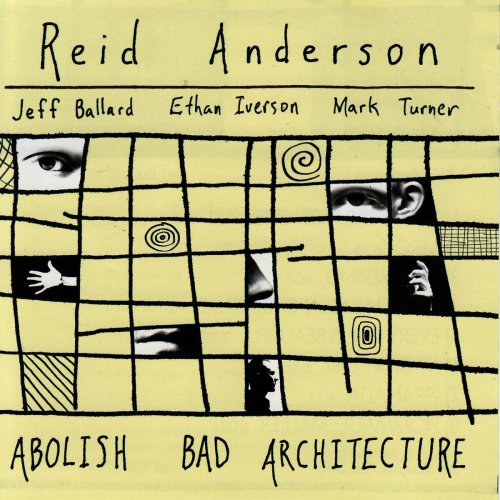The Raphael Ensemble - Martinů & Schulhoff: String Sextets (1992)
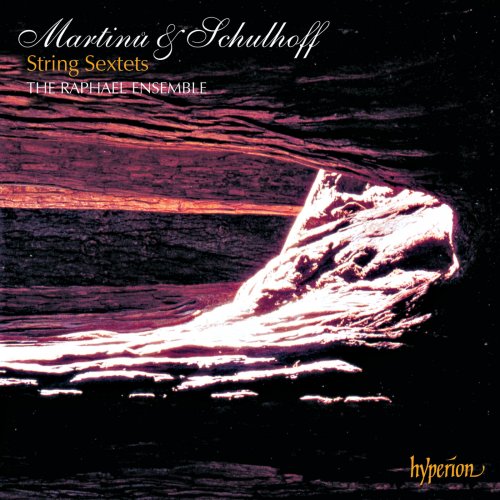
Artist: The Raphael Ensemble
Title: Martinů & Schulhoff: String Sextets
Year Of Release: 1992
Label: Hyperion
Genre: Classical
Quality: flac lossless (tracks) +Booklet
Total Time: 00:56:12
Total Size: 229 mb
WebSite: Album Preview
TracklistTitle: Martinů & Schulhoff: String Sextets
Year Of Release: 1992
Label: Hyperion
Genre: Classical
Quality: flac lossless (tracks) +Booklet
Total Time: 00:56:12
Total Size: 229 mb
WebSite: Album Preview
01. String Sextet, H. 224: I. Lento – Allegro poco moderato
02. String Sextet, H. 224: II. Andantino – Allegro scherzando – Tempo I
03. String Sextet, H. 224: III. Allegretto poco moderato
04. 3 Madrigals for Violin and Viola, H. 313: I. Poco allegro – Poco vivo
05. 3 Madrigals for Violin and Viola, H. 313: II. Poco andante – Andante moderato
06. 3 Madrigals for Violin and Viola, H. 313: III. Allegro – Moderato – Tempo I – Allegro
07. String Sextet: I. Allegro risoluto
08. String Sextet: II. Tranquillo. Andante
09. String Sextet: III. Burlesca. Allegro molto con spirito
10. String Sextet: IV. Molto adagio
In the twentieth century we have witnessed, to an extent probably without parallel in human history, the far-reaching—and sometimes devastating—effect that political events have had upon the fate of artists and their work. At first glance, other things being equal, there would seem to be no reason why the fates of two exceptionally gifted composers and musicians, born within a few years of each other in the same country about a hundred years ago, should have been so very different. The ‘other things’, however, were not equal. So grotesquely unequal did they become that the younger musician, from a musical, well-connected middle-class family and encouraged by Dvorák, who served in the Austrian army in World War I and thereafter embarked upon a brilliant career as a composer and pianist, died before he was fifty in a Bavarian concentration camp, his music all but forgotten for over forty years.
Prague in the 1890s was the Bohemian capital, part of the Austro-Hungarian Empire and a beautiful city of great antiquity and artistic provenance. The family of Ervín Schulhoff, who was born there in June 1894, encouraged the boy’s evident musical gifts. Indeed, so musical was he that Dvorák—elevated in 1901 from professor to director of the Prague Conservatoire—urged the Schulhoffs to enrol their son as a pupil of the Polish pianist and composer Heinrich Kaan-Albert. After several years Ervín was sent to Vienna for further study and—his strong desire to be a composer now manifesting itself—to the Leipzig Conservatoire where he studied piano with Robert Teichmüller and composition with Max Reger. This was, no doubt, the most important period of Schulhoff’s studies, and concluded with four years in Cologne (until 1914) where he also had several lessons from Debussy. As a commanding young pianist, Schulhoff won the Mendelssohn Prize in 1913.
Austria declared war on Serbia in July 1914 and was soon embroiled in a vast pan-European conflict. With Germany and Italy forming a pre-war Triple Alliance, Austria-Hungary seemed invincible, but Italy remained neutral in the opening months of the hostilities until, reneging on the Alliance, the Italians declared war on Austria-Hungary in May 1915. Schulhoff was now eligible for military service. He was called to the colours and served in the Austrian army at the Italian Front. As with his older contemporaries Vaughan Villiams and Ravel, the grisly experience of close-quarter warfare left lasting and profound influences upon him both as man and artist.
Upon demobilization Schulhoff returned to his native Prague for a short while, but the newly declared state of Czechoslovakia, if not overtly hostile to centuries of virtual Germanic domination, did not encourage closer ties. Schulhoff felt his career would be better served in the freer aesthetic climate of the new Germany of the Weimar Republic. Within a few years his brilliance as a pianist established him as a leader of the post-war avant-garde, his recitals featuring advanced music of the day, notably that by the Czech quarter-tone pioneer Alois Hába. Schulhoff also became a noted jazz pianist in nightclubs in Berlin and Dresden and his own works were attracting some attention. His Piano Sonata No 2 again won him a Mendelssohn Prize in 1918. But the economic facts of life in Germany by the mid-1920s were horrendous; society’s fabric was stretched beyond breaking point.
Schulhoff had experienced much in his young life; he had endured niggling anti-semitism and saw death and destruction at first hand as a soldier. He had seen the collapse of powerful empires and their descent into political chaos and uncertainty. As a jazz-club pianist he had witnessed the depths to which individuals will sink when they have nothing. Surely, he believed, there had to be a different way of ordering human affairs, one which could unite the workers of the world in common brotherhood? Not until some years later did Schulhoff join the Communist Party to work for such ideals; by then he had long returned to his home city of Prague and saw not the Communists, but the National Socialists, win power in Germany. Hitler’s annexation of the Sudetenland in 1938 and the German occupation of the rest of Czechoslovakia the following year put Schulhoff in peril: he was both a Jew and a communist. To protect him from arrest he was given Soviet citizenship. Hitler’s pact with Stalin in August 1939 undoubtedly saved Schulhoff, but for barely two more years. When Germany suddenly attacked Russia in June 1941 he was arrested and sent to the notorious Wülzburg concentration camp where he died in August 1942, his seventh and eighth symphonies unfinished, his manuscripts left to their fate.
Schulhoff wrote much music: eight finished symphonies (the first two unnumbered), two piano concertos, orchestral works, several ballets, an opera and two cantatas, HMS Royal Oak (a ‘jazz oratorio’) and The Communist Manifesto (a setting of the complete text in German by Marx and Engels; the score was eventually found in Russia and premiered in Prague in 1962). These latter works date from the early 1930s, by which time Schulhoff had abandoned chamber music. From 1919 to 1930, in what might be called his ‘middle period’, as well as in his student years, Schulhoff wrote several notable chamber pieces, the more significant including five works for string quartet and the String Sextet. Several were premiered at International Society for Contemporary Music festivals (Salzburg in 1924, Venice in 1925, Graf in 1929) and at the chamber music festivals at Donaueschingen in 1924 and 1925 with some triumph.
His Five Studies for string quartet and the Sextet were the most successful of Schulhoff’s works heard at the 1924 festivals, perhaps the high point of his pre-communist years. The Sextet was first heard on 19 July at Donaueschingen (the day before Schoenberg’s Serenade Op 24 was premiered at the same festival) played by the Czechoslovak Zika Quartet, with Paul Hindemith playing second viola and his younger brother Rudolf second cello. Schulhoff’s Five Studies were introduced three weeks later at the Salzburg Festival. Schulhoff’s two different works had varied fates. The Studies, in popular idioms, were soon published and taken up, but the Sextet—a very serious, indeed deeply tragic work making considerable technical demands—was rarely heard and remained unpublished until 1978.
The first movement was finished on 27 April 1920 in Dresden; he returned to it four years later, in Prague, adding the other three movements by the end of May. In Dresden, Schulhoff had made a deep study of Schoenberg’s music: the strongly chromatic nature of the Sextet’s first movement reveals such study, although it is not consciously atonal. For, in spite of the work’s deeply depressive emotional state and seeming absence of tonality, it is derived from, and virtually underpinned throughout the four movements by, a constantly destabilizing chord of C–Db–G. These three notes are specially significant throughout the piece. They begin the work, and form a pedal ostinato for the main themes in the first movement coda. In its initial shape and in its constantly fluid transformations, the three-note cell permeates the entire Sextet, lending it a monothematic character—the pedal C–G opens the second movement in a calmer and more peaceable mood dominated by a yearning, long-breathed cantilena (‘senza espressione’) which is heard three times. In this movement the texture of the work assumes a greater structural function, revealing the influence of late Debussy, in particular his late sonatas. The Burlesca is an incisive 5/8 movement of tempestuous character, fiendishly virtuosic for the players. The finale also shows the influence of late Debussy, being a lyrical meditation upon earlier material which, constantly descending, eventually returns to, and ends with, a muted chord of C–Db–G. The chord demands that the Db is heard as a flattened supertonic, and so one could claim that Schulhoff’s Sextet is in C, a rough-hewn work of deep brooding fearfulness.
As a child Schulhoff had experienced the anti-Semitism of the Austrian Empire. Schoenberg had abandoned his Jewish faith in Vienna in March 1898 (he reconverted thirty-five years later). Schulhoff’s studies took him to German cities and great masters in Reger and Debussy; he was an exceptional pianist. But his contemporary Bohemian, Bohuslav Martinu (born in the town of Policka, near the Moravian border, in 1890) came from a Catholic family of a lower class, and his family’s circumstances demanded sponsorship and civic help with his fees at the Prague Conservatoire which Martinu entered in 1906. For the next two years Martinu and Schulhoff were fellow pupils (though there is no evidence they knew each other). Martinu’s studies continued intermittently at the Conservatoire for over ten years and he never graduated. Although he was a very gifted violinist and played for some seasons in the Czech Philharmonic he did not aspire to a dual career as did Schulhoff—and he did not leave Bohemia until 1923. Above all, Martinu wanted to compose and, on the outbreak of war, he returned from Prague to Policka, so successfully faking the symptoms of various illnesses to avoid military conscription (aided in this strategem by his family and neighbours) that psychosomatically he indeed fell ill. He became addicted to chain-smoking cigarettes, the consequences of which killed him in August 1959.
After World War I Martinu was readmitted to the Prague Conservatoire as a pupil of Josef Suk (Dvorák’s son-in-law and grandfather of the violinist). He was now thirty years old and felt his future lay not in Czechoslovakia but in the post-war musical capital of the world, Paris. In 1923 he left for France and lived in Paris until 1940. Within ten years of settling there had established himself as a prolific composer in all forms. Chamber music meant much to him and he wrote many works in the genre throughout his career: a Violin Sonata from 1918 is amongst the first of his mature compositions; in 1959, he wrote four chamber works.
Martinu worked hard (resisting all teaching offers at that time), the fruits of which resulted in growing international recognition. He received commissions from abroad and in 1931 was asked by the Sonata Players in London for a Sonata for two violins and piano which he completed early in 1932. A short while later he was urged by friends to write a new work for the Elizabeth Sprague Coolidge Medal ‘for services to chamber music’, inaugurated that year in Washington DC by the enlightened American patroness of music who had established annual festivals and prizes for chamber music in 1918. Encouraged also by his new wife of several months, in less than a week in May 1932 Martinu composed his String Sextet. This work carried off the First Prize from 145 entries but he ignored the telegram informing him of his success, thinking it a joke played on him by his friends. The much-needed money stayed in his bank for some weeks until his wife and friends convinced him it was genuine, yet the Sextet, first given in Washington in April 1933 by the Kroll Sextet, was not published until 1947.
A note on the score states ‘double-bass may be added for use by string orchestra’, the part being printed at the foot of the score. This was clearly an afterthought, perhaps prompted by the imminent publishing of the piece fifteen years later and an attempt to obtain more performances. Martinu never heard the Sextet in the string orchestra version. The posthumous premiere was given by Paul Sacher in October 1959.
We have seen that Martinu’s Sextet was written astonishingly quickly, in less than a week, which makes its structural originality and organic unity all the more surprising. The structural originality is such that the music combines at the same time duple, triple, quintuple and sextuple forms. The Sextet has three movements, hence triple (tri-partite) structure; but the first movement is bi-partite (slow, fast), hence a duple structure; the central movement is tri-partite (slow, fast, slow). Now, allied to the outer movements, we also have (with the Allegro scherzando of the central movement forming the fulcrum) a quintuple structure. But the tempo sequence, across the movements, is (i) Slow–Fast, (ii) Slow–Fast–Slow, (iii) Fast, producing a sextuple tempo structure. Such a unique multiple structure suggests some deeper processes are afoot in the music itself.
However interesting this basic ground-plan appears, it is the continually evolving musical argument of the Sextet which is consistently gripping, an early example in this composer’s work of ‘progressive tonality’—the evolution of one key, or tonal centre, from another. In this case, Martinu tackles one of the more difficult of such evolutions, that of adjacent tonalities. His Sextet begins in the depths of C minor in a mood of uncertain pessimism (almost, astoundingly, where Erwín Schulhoff’s Sextet ended), but concludes in a brilliantly vivid D major. Indeed, there are several other remarkable musical connections common to both works: the strong chromaticism of their first movements; the structural functions of texture (in both slow movements); the unifying cell of a few notes (Martinu’s opening Largo, rising from the lowest region, contains as its kernel the intervals of a semitone and a third); the challenge, in the tonal scheme of Martinu’s first movement, of the same flat supertonic (D flat) which destabilized Schulhoff’s work (but which, in the Martinu, behaves rather more in accordance with classical procedures). Here it falls to A flat, then semitonally to G, the dominant of C, in which key the movement, its anger subsided, ends unambiguously in the major mode with the assurance of E natural. The slow movement’s tonality rises by a semitone from E to F (in which key C is also the dominant, showing therefore that the ultimate tonality of the work cannot be C) and begins fugally as a double exposition, but only with regard to texture, not treatment: the kernel’s third now falls (after a counter-exposition of this material) to D major, in which key the music pauses. Another rise would take us to E flat (further destabilizing the original tonality) and in this key the central Allegretto scherzando dances across the fabric of the music with myriad textural changes. As this is, structurally, the centre of the work, it cannot rise to E natural (this would set in train the earlier harmonic sequence), so it must fall, to D, the high octaves of which on the violins usher in the recapitulation of the opening fugato which ends the movement a little uncertainly, but quietly, in F major. To confirm the major tonality of F, A natural has to be established—and is quietly asserted at the beginning of the finale in the bass. But this finale has other problems to consider. It has to resolve the emotional implications of the work (the enervation at the end of the second movement has to be overcome); to resolve the evolving harmonic demands of the Sextet, and the inherent pulse-structure: an extended fast ending in a mood of well-being is called for; finally, the full working of the Sextet’s basic organism has not yet been completed. Every one of these demands is fully met in this brilliant, light-hearted (but never flippant) finale, whose language may remind some of later Vaughan Williams (Dives and Lazarus) or Tippett (Concerto for Double String Orchestra and String Quartet No 2). The explanation lies in the common pentatonic, even Celtic, nature of these composers’ folk-based syntax, one which was foreign to the cosmopolitan Schulhoff. As Martinu’s Sextet reaches its conclusion, the intial destabilization must be faced. The pulse slows organically and a bare C–G in the bass (the last connection with Schulhoff’s Sextet) ushers the dance-like finale in a second time, which leaps another fifth, a vivid A natural clearly exposed as the dominant of D major, in which bright key the work triumphantly ends.
One week after signing his non-agression pact with the Soviet Union, Hitler invaded Poland on 1 September 1939. Guaranteeing Polish neutrality, both Britain and France declared war on Germany two days later. By 22 June 1940 France, overrun by the Nazi army, signed an armistice with Germany. A few weeks later, uncertain and afraid, Martinu and his wife made their way to neutral Portugal where they stayed for some months until they could escape to the United States. They settled in New York and Martinu threw himself into work with his customary application. In the USA he turned to teaching, and his music found a widely appreciative audience to which he as an artist responded in turn. Symphonic music dominated his output during the war and in 1946 he held a six-week course at Berkshire, Massachusetts (where Elizabeth Sprague Coolidge had begun her chamber music Festival in 1918) before returning to Prague as professor of composition at the Conservatoire. But a serious fall in Berkshire prevented his European return until 1948. He did not fully recover from the accident and spent most of 1947 convalescing—a year devoted almost exclusively to writing chamber music. The first of these 1947 works is the Three Madrigals for violin and viola, written for the brother and sister duo Joseph and Lilian Fuchs. (Martinu composed a Duo No 2, so termed, for them in 1950.) After stretching his compositional powers in his large-scale five symphonies (1942–6), Martinu’s enforced rest led him to turn to smaller forms. The result, in the Three Madrigals, is a work which is worthy to stand alongside the Mozart Duos, a performance of which by the Fuchses had originally inspired Martinuo. Here, surely, is a memoir of his roots: Bohemian-Moravian folk themes and dances, the pentatonic scale, the very instrumentation of his beloved violin and viola, the ‘sprung’ rhythms of the madrigalists which had so enchanted Martinu when he first heard The English Singers in 1923, intimate sketches of his homeland momentarily at peace and recollected from a distant convalescence.


![Alma Micic - You're My Thrill (2024) [Hi-Res] Alma Micic - You're My Thrill (2024) [Hi-Res]](https://www.dibpic.com/uploads/posts/2025-12/1766493943_amyt500.jpg)

